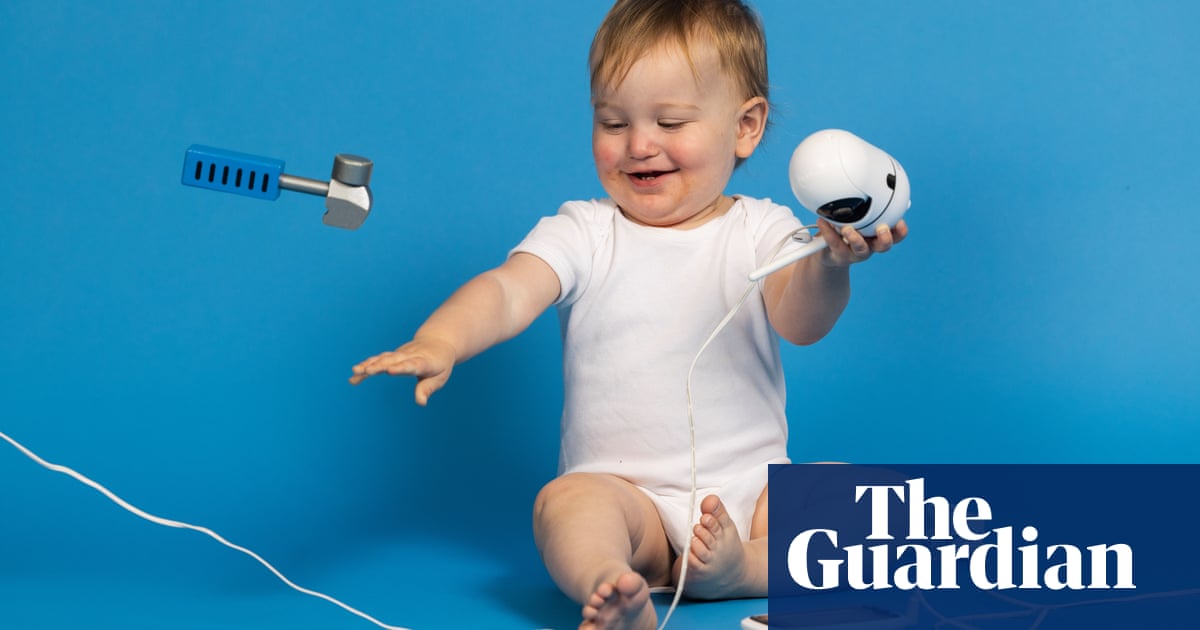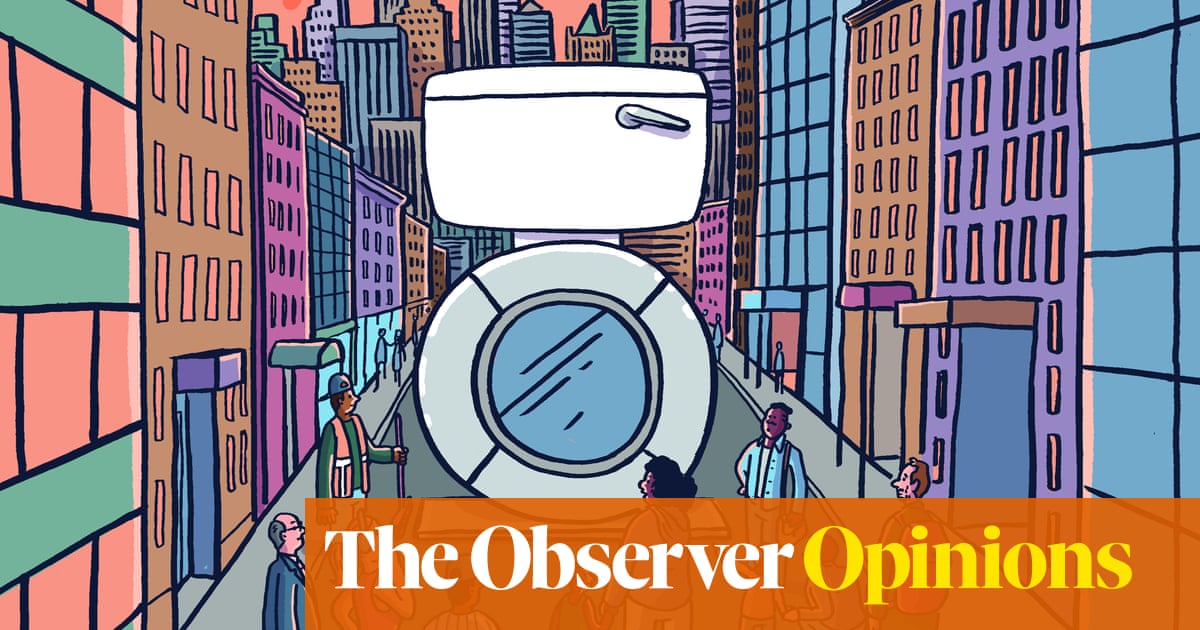
Most nights, around 3am, first-time mum Courtney Sanders is on her phone in the dark as she tries to rock her baby to sleep. Her three-month-old son is struggling with colic-like symptoms and the more Sanders searches for how to help, the more products are suggested to her. “My Facebook is currently full of ads for bedside cribs that come with an incline to help reduce colic – but I already have one of those and it doesn’t do anything.”
She’s tried different feeding bottles, teats and milk formulas. The last thing she bought was a Windi. “It’s a tube you put into the baby’s bottom to help them pass wind,” she says. It didn’t work. Right now, she’s searching for a new baby monitor, as the one she bought is too complicated to use. Tomorrow she’s expecting a delivery of Munchy Mitts – a babygrow with silicone mitts for teething babies to chew on.
“It’s all so overwhelming,” Sanders says. “There’s just so much stuff out there and you never know what’s going to work.”
She estimates she’s spent £400 on products to help with her baby’s wind problems and £2,850 on general baby gear.
When a baby comes, suggestions for clobber that claims to nurture, protect and monitor come with it. My daughter is now nine but I remember the constant parade of product recommendations and decisions. The Bumbo floor seat, the co-sleeper cot, the playmats, the egg-shaped thermometer that changes colour according to how warm the bedroom is. The sheer amount of stuff might have caused me more stress than not having any of it. Like many mums, I became a collector of baby fear gear.
In the 10 years since I was pregnant, continuous innovation and next-day delivery have hypercharged an already active market. Audio-only baby monitors evolved into grainy black-and-white screen monitors, then to colour screens, and now come with HD images. Even the humble cleaning wipe has been given an upgrade, with a “baby-wipe warmer” – a USB-connected heating device so you can avoid startling your baby with a cold wipe on their bottom.
It’s estimated that the value of the global baby safety and convenience market will reach $2.7bn (£2.05bn) by 2026, with the general market for baby products growing to £12.82bn.
Many of these products exist to soothe very real anxiety. Sudden infant death syndrome (Sids) is every parent’s worst nightmare. When my daughter was a baby, we had a sensor mat that came free with our baby monitor; it promised to alert us if she stopped moving, which was appealing in theory, but the reality was that it went off so often we ended up not using it.
The safest sleep advice, as advocated by the NHS and the Lullaby Trust, a charity that raises awareness of Sids, is to put babies on their backs on a flat, firm mattress. But some parents are still attracted to gear that implies it can help prevent Sids, items such as “sleep positioners” and ergonomic mattresses that suggest they can keep babies from turning over in their sleep; but no product has been proven to reduce the risk of Sids. In fact, recent research, while far from conclusive, suggests that an enzyme in babies’ blood is linked to risk of Sids. Fear gear often masquerades as giving us agency over things that are beyond our control.
Then there is the gear that promises to be a panacea for sleeplessness. The SNOO smart sleeper cot – a mere £1,195 – operates with an “advanced algorithm” that recognises your baby’s fussing and responds with rocking and white noise that, it claims, will lull them back to sleep.
The Owlet baby monitor allows you to livestream your baby in HD from their cot to anywhere, and comes with a “smart sock” that you put on your baby’s foot to monitor their heart rate and oxygen levels, and track their sleep patterns. There’s a whole range of white noise machines: Nuby Penguin, Ewan the Sheep, Ollie the Owl (no relationship to the Owlet).
So many products do genuinely make parenting easier – the relief brought by a stair gate, a bouncer, and a sling is akin to a second pair of hands. But babies are all different, and what works for one may not work for another. Finding the right thing takes a lot of time and emotion.
“I usually read about a product on Netmums, Peanut or a Facebook group, and then I’ll go to Amazon to read all its reviews,” says Sanders. “When I find something with really good reviews, it gives me hope. I’ll order it in the middle of the night and then, in the morning, show my husband and we’ll both be excited for its arrival. Maybe this is the thing!”
First-time mum Eve Jackson, a campaigns manager at a charity in London, says when her baby was born she felt like a sitting target for advertisers. “You’re very adrenalised from having a newborn and being awake all the time, and you have these crazy hormones raging,” she says. “If you’ve done any kind of antenatal classes, you’ll be in WhatsApp groups of mothers who are in exactly the same position as you. Your life becomes a series of product recommendations and impulse buys. Deciding whether to buy these things can play on your anxieties about whether you’re being a good parent.”
Tom Hazell, father of a three-year-old, feels sceptical about what’s pushed to him and his wife online: “There’s a lot of people selling things on social media where the subtext is, ‘You don’t want your baby to die, do you? Buy one of these’.”
What does this proliferation of “helpful” parenting goods say about us? Amy Dao, an assistant professor of anthropology at California Polytechnic State University who has researched the marketing of childproofing devices, says, “The way we live as nuclear families, where we’re no longer such a part of larger families or villages who would have helped to take care of a kid in the past, makes childproofing really appealing. You may only have one or two adults in a house, so you need all the help you can get.”
Dao found that all the mums she spoke to thought safety products were great because they gave them peace of mind. But she couldn’t find any research that could say with certainty whether or not childproofing products were effective.
Hazell recalls the items that he and his wife bought and regretted. “There was the room temperature egg,” he says. “Our daughter was born at the start of a very hot summer, so the egg was constantly red because there was a heatwave. We just turned it off.” When his daughter became a toddler, they got childproof clips to keep their cupboard doors locked, but most broke. And it was only after they bought plug socket covers that he discovered that they are superfluous in the UK as sockets are designed for child safety.
Many of these products seem to be jostling to help with the same core issue: that parents, and especially mothers, are exhausted by the responsibility of child rearing, so buy things looking for much-needed help. But is “Buy this next” really our main answer to supporting stressed-out parents?
The cost of living crisis is hitting single-parent families hard, making some products impossible for many to afford. In Facebook parenting groups, more and more mothers are asking anonymously for help, or unable to cover the basics for their families. Gadgets have to take a back seat to the household necessities, no matter the marketing pressure. “If we as a society decide these things are necessary,” Dao says, “are there ways we can provide them without making them an individual’s problem?”
There are obvious policy changes that the UK can start with. In Finland, expectant mothers can choose between a maternity grant of €170 (£145) or a maternity package which includes products such as a sleeping bag, clothing and babycare items. We could also use policy to address the high cost of childcare and our low rate of paternity pay.
Dao noticed a darker side to all the cheery promotion of childproofing products. “As I did more research, I started to feel that there was something insidious to it,” she says. “The way that capitalist consumerism has infiltrated parenthood and no one wants to argue against it. I mean, how can you? These things help us and are beyond criticism.”
There’s an assumption that by questioning it, you’re judging the people making the purchases. That’s not true. We all understand why people buy the gear. I bought the gear. But we need to question the premise of the sheer amount of gear that’s been offered to us, without criticising people for buying it.
When I think back to myself as a new mum, I feel a tenderness towards this person trying to figure it out day to day. Among the shock of all the physical, emotional and lifestyle upheaval, it makes sense that I reached for the familiar: sorting through product reviews had a logic to it that soothing a crying baby didn’t. But using hand-me-downs from friends and things from baby gear libraries as well as identifying a few trusted people and sticking with them helped turn down the volume on the ads and the endless searching for the next product that would solve that week’s problem.
So what do you really need?
Rebecca Seal explains how to have a baby on a budget
Just before I had my first baby, I lost four regular writing gigs and my income temporarily disappeared. Maternity allowance for self-employed people like me is £156.66 a week – the same amount you get on universal credit as a parent with one child – AKA not bloody much. We were fortunate in that my husband was still earning, but this is why I worked until 24 hours before the birth and only took 11 weeks off afterwards.
We tried hard not to spend unnecessarily on baby kit – definitely not the UK average of £6,000 in the baby’s first year.
Mainly, that meant buying secondhand and selling on afterwards. Brand new baby gear commands outrageous premiums. What’s the point of fancy nappy bag satchels with a million compartments? An ordinary rucksack with a folding changing mat and a couple of big cheap, clear plastic pouches (one for dry, one wet) is far more usable than a fiddly £75 designer thing. Our eBay pushchair was £200, including sleep pods and footwarmers; the equivalent new was £650. Over the next six years, we spent about £100 maintaining it before selling it on – by then it was 10 years old, which we did tell the new owners – for £150.
What we couldn’t buy cheaply, we borrowed: a Moses basket; a Jumperoo entertainment centre (hideous, but a usefully confining safe space, though my hot tip is to never put the batteries in); a baby bath; walkers and play mats. Clothes were bought in bundles on eBay and, later, Vinted or handed down, passed between friends, sold on or given to charity.
Obviously this is all easier if you’re not a) totally poleaxed with exhaustion and/or b) live a life of relative plenty and in a social setting in which secondhand is trendy. I didn’t sell or donate much in the first two sleep-deprived years; the growing heap just nagged at me. Being thrifty by choice is different from doing it because you have to. Scarcity has a measurable impact on our cognitive abilities, as does the sheer stress of trying to keep a new person alive. Secondhand buying and selling is undeniably more complicated and time-consuming than ordering new online.
I didn’t manage to ignore all the baby marketing hype and got sucked into buying a video monitor (sort of helpful); a clip-on breathing monitor (will scare the absolute crap out of you when it inevitably unclips and goes off like a fire alarm); a vibrating chair (made both my children laugh but then cry) and a door bouncer (used for about two weeks).
So what do new parents actually need? Barbara Chewings manages the Little Village baby bank in north London and provides kit to struggling families. “Babies need somewhere to sleep: a crib, cot or Moses basket, with sheets, blankets and a brand new mattress. They need outdoor clothes, like a pram suit, and indoor clothes. Unless you know you’re likely to have a small baby, skip the ‘newborn’ size and go straight to 0-3 months. You’ll need nappies, disposable or reusable, wipes or cotton wool, plus breast pads and maternity pads.
“If you’re lucky enough to exclusively breastfeed, you won’t need much else. But if not, you’ll need bottles, teats and formula – which is hellishly expensive – and a way to sterilise everything, which can just be water from the kettle. You can use secondhand bottles as long as you get new teats. These are so expensive, though, that it is usually cheaper to go to the supermarket or Boots and buy a set of own-brand bottles and teats. You don’t need a bath – you can wash a baby in the sink”.
And everyone needs a way to leave the house, whether in a sling or buggy. “You need to feel like you can escape. Even if it takes two hours to get out.”











